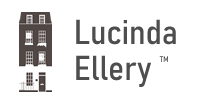Trichotillomania is a body-focused, impulse control disorder which inevitable leads to some degree of hair loss for the sufferer.
Due to its psychological origins, however, the impact of trichotillomania is far more than just physical. It can be extremely distressing for the person with the condition, as well as making them feel so ashamed and embarrassed of their behaviour that they are afraid to tell anyone what is happening. This can lead to problems in getting a formal diagnosis of the condition.
Once trichotillomania has finally been accurately diagnosed, it is then time to think about treatment. Trichotillomania in children tends to resolve itself given time, but a doctor should be consulted if it persists.
For adults, there are a few options available, although the sufferer will need to be patient and cooperative to see results.
The following approaches have shown limited effectiveness in improving symptoms of trichotillomania, but it is important to remember that there is no ‘magic’ cure. You can try:
• Habit reversal training (HRT)
• Cognitive behavioural therapy
• Hypnosis
• Medication such as Acetylcysteine and Inositol
For an increased chance of successful treatment of trichotillomania, it is recommended to try combining medication-based treatment with behavioural therapy methods.
